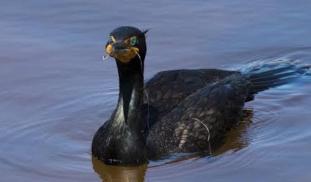352
0
3
References
- 1. Barron HW, Kehoe S, Bast R, Hill J, Donini J, Flewelling L (2019). Use of Intravenous Lipid Emulsion Therapy as a Novel Treatment for Brevetoxicosis in DoubleCrested Cormorants (Phalacrocorax auritus).
- 2. Garrett, KB, Hernandez, SM, Barron, H, et al. Prevalence, distribution, and diversity of cryptic piroplasm infections in raccoons from selected areas of the United States and Canada, International Journal for Parasitology: Parasites and Wildlife 9, 224-233; 2019.
Please wait...
About This Project
Fishing line entanglement injuries are a common problem affecting over 200 different wildlife species globally. Often, animals struggle to free themselves for extended periods of time before they are extracted or brought to a veterinary hospital. This study will analyze whether blood lactate levels can be used as a biomarker for severity of injury or as a prognostic indicator for successful rehabilitation and release of entangled birds back into the wild in Southwest Florida.
More Lab Notes From This Project

Browse Other Projects on Experiment
Related Projects
Do Australian bats have what it takes to survive the deadly White Nose Syndrome?
Australian bats are at risk from the deadly fungal disease White Nose Syndrome (WNS), which is expected...
Are climate change and air pollution triggering cardiovascular disease?
Ongoing global climate change and air pollution emissions pose a major threat to cardiovascular health...
Can blood lactate levels help guide treatment for birds suffering from monofilament line entanglement injuries?
Fishing line entanglement injuries are a common problem affecting over 200 different wildlife species globally...




